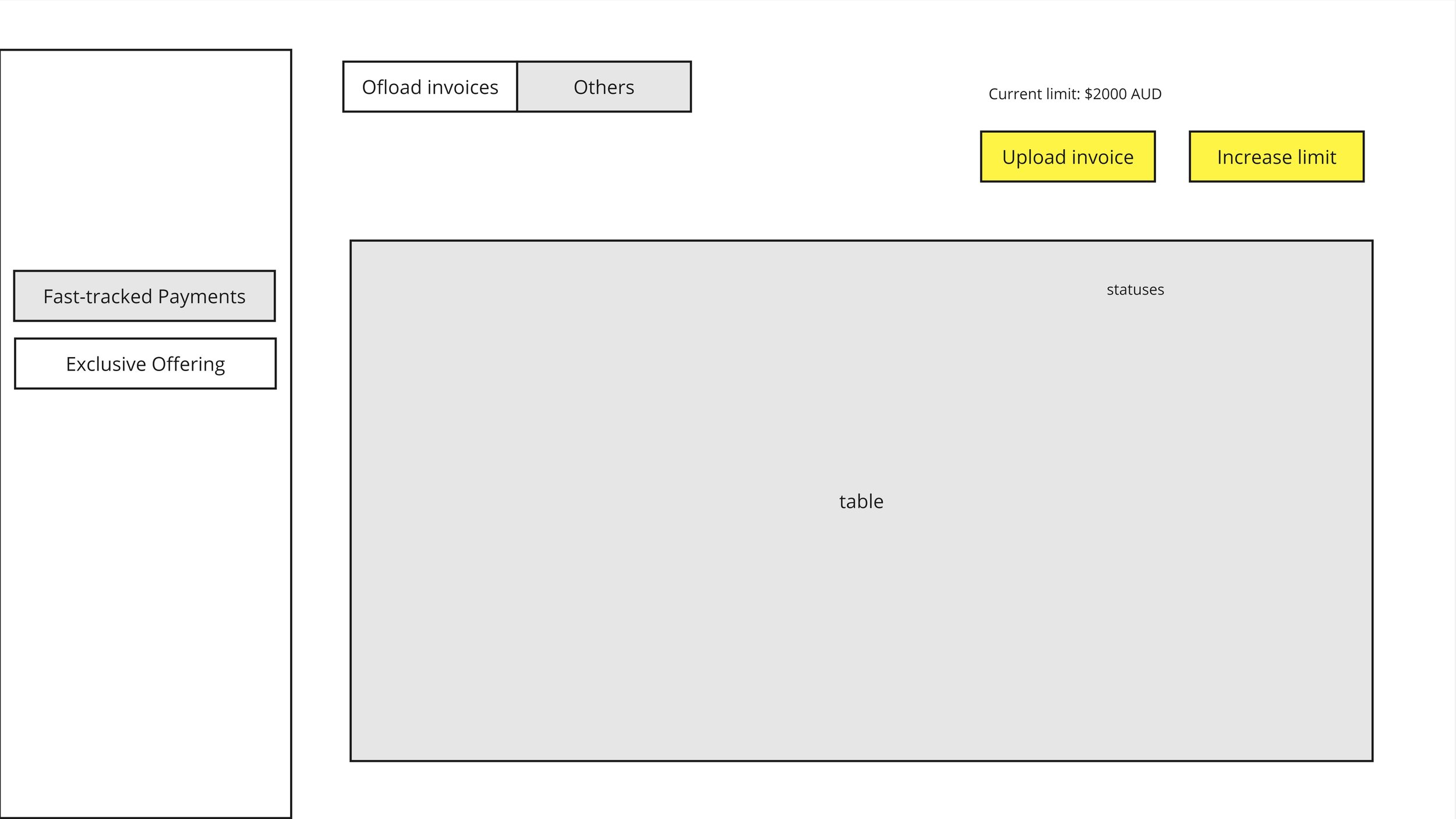Enable carriers to have early access to payment
Overview
Problem
To enhance Ofload platform's financial flexibility and add help carriers maintain positive cashflow, the team decided to carry out new initiative to integrate Butn, a digital payment solution designed to offer immediate funding to businesses. The integration aimed to provide our users with seamless access to working capital, enabling them to manage cash flow more effectively and take advantage of growth opportunities.
Objectives
Encourage carriers to engage with the platform by adopting this new feature -> improve platform engagement rate.
Outcome
50+ invoices being funded in the first month of launch
Engagement rate: increased by 10%
My Role
I was the lead designer, collaborated with PM and developers.
My Process
Understanding carrier’s needs and motivation
Define scope and feature prioritisation
Mapping the process flow
Mid-fi prototyping, clickable prototype walk-thru & iterate
Finalise design, handoff & test
Analyse data, collect feedback for future iteration
1. Understanding carrier’s needs and motivation
From talking to carriers, I have discovered some key insights:
Cash Flow Constraints: Many of our users faced cash flow issues due to delayed payments from clients.
Time-Consuming Financial Processes: Traditional funding options were often slow and involved cumbersome paperwork.
Need for Transparency: Users desired clear and straightforward financial solutions that integrated seamlessly into their existing workflows. Larger trucking companies concern about policies
2. Define scope and feature prioritisation
I workshopped with stakeholders including PM, tech lead and managerial members of the operation team to align on the issues needed to be prioritised. “How might we” redesign the flow to help carrier:
Complete registration with Butn
Clear communication regardings terms& conditions: instill trust in the process of uploading invoices
3. Mapping the process flow
4. Mid-fi prototyping & clickable prototype walk-thru
Integration Process
Collaboration with the development team was crucial to ensure a smooth integration. We followed an agile methodology, with regular sprint reviews and feedback sessions.
1. API Integration my team worked closely with Butn’s technical team to integrate their API into our platform, ensuring secure and reliable data exchange.
2. Testing and Quality Assurance Extensive testing was conducted to ensure the functionality was robust and free of bugs. This included unit tests, integration tests, and user acceptance testing.
3. Launch and Rollout The integration was rolled out in phases, starting with a beta version for a small group of users. This allowed us to gather real-world feedback and make necessary adjustments before the full launch.
Design system
The design system was built based on MUI. MUI has an extensive set of pre-designed components allowed us to accelerate the development process, reducing the time needed to create common UI elements from scratch.
Optimise for both desktop and mobile, focus on displaying information in the most efficient way.
5. Finalise the design and handoff
Learning
Ship messy:
Solving complex problems often means accepting that not everything can be perfect right away. Striving for perfection can delay development and increase user frustration. Sometimes, it's better to release a "messy" version rather than delay indefinitely. During feature prioritisation workshops with stakeholders, defining the scope is crucial. This helps align the team, stick to agreed-upon goals, and avoid scope creep.
Working together with product and tech:
Aligning tech, product, and design teams is challenging, especially under time constraints. We had to move quickly, which inevitably led to some tech and design debt. Balancing user needs with the product vision was essential, even though it sometimes meant making difficult trade-offs.
Design with pragmatism:
While modern aesthetics are tempting, it's important to focus on the actual value they add. Designing with pragmatism ensures that decisions are based on functionality and user needs, rather than just appearance.




